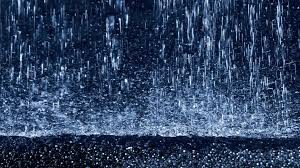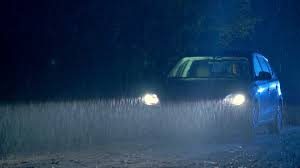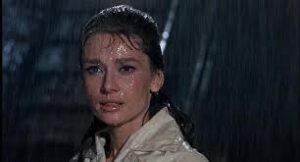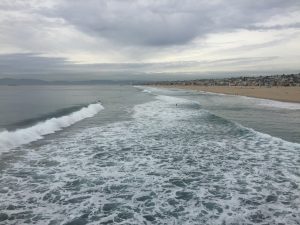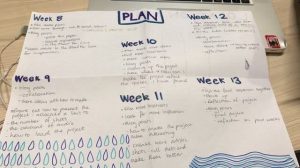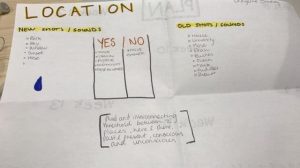“The pupil is made of water.” Aristotle, De Anima, III
“The true eye of the earth is water.” – Gaston Bachelard, L’Eau et les rêves, 1942
My project is an investigation through a sequence of shots of the use of water in film. I have studied the visuals and audio of water in film. I chose this as a topic because water is interesting to film, and its sound is engaging. Water has many meanings in film, which i found fascinating and exciting to shoot. I have researched the idea of rain, puddles, and water in many locations.
Water symbolises multiple things depending on the context in which it appears, but most commonly connotes sadness, submerging, rejection or despair. Water also represents washing of sins, grief, relief or cleansing. The ability for water to have many different significant meanings is interesting to explore. There are many modes of expression and perception in film, and water is one of them.
RESEARCH
What you are making –
I believe making this project a series of shots or/and an investigation is a strong idea. I can research how rain is used in film, why it is, what it means/is used to convey and how it enhances/worsens a quality of film or shot. The series of shots could also look at how editing changes the way rain is seen, and what different types of editing does to the shot when rain is involved.
“Water makes the screen a fluid and interconnecting threshold between two places, between here and there, between present and past, conscious and unconscious, waking and sleeping, life and death.”
“The point is that water is not only a representational substance that effectively visualises and symbolises the characters’ psychic condition, but also a substance in which the film characters’ bodies are immersed or drown together with their troubles.”
According to Film in Depth. Water and Immersivity in the Contemporary Film Experience, Adriano D’Aloiacinema states that “cinema has recognised that water can visually give matter and meaning to human desires, dreams and secrets, eliciting suspense and fear.” He continues to state that “images and sounds stream on the screen like an inexhaustible flow of water, a ‘mechanical fluidity’ that perfectly expresses the spirit of modern times”. There are many ‘aquatic’ modes of expression and perception in film. The appearance of water on the screen offers several possibilities and inherent meanings. Since ancient times, the element of water has represented the substance that generates life on Earth, and so it’s importance is significant in creating a film.
The ability for water to have many different significant meanings is extraordinary and is interesting to explore. Because rain diminishes sunlight, it creates human emotions of darkness and depression (however this is not always the case). Water is often used metaphorically in literature to represent discontent or to invoke a forlorn mood. Many films use rainfall to create heightened drama and a sense of foreboding, symbolizing human tears. As a foreshadowing technique, rain or pouring rain or water in general is often use to create a sense of foreboding, or impending disaster. Water is also a substance that can lend itself to symbolise nightmares, hallucinations, depression and trauma.
Over time, contemporary cinema has exploited the capability of water, visually and aurally, to give a “palpable form to human desires and dreams.” Water is evoked in film as a substance that submerges something, and that something may be destined to re-emerge.
Water is also important in narrative flows. It is generally used at the turning point of film, and the turning points of the plot. Usually, water offers a solution to signal the passage to anoth er temporal framework of the events, e.g. a cross-fade before a flashback
- Rain symbolizes multiple things depending on the context in which it appears, but most commonly connotes sadness, rejection or despair. Because rain diminishes sunlight, it creates human emotions of darkness and depression. Rain is often used metaphorically in literature to represent discontent or to invoke a forlorn mood. Many films use rainfall to create heightened drama and a sense of foreboding, symbolizing human tears
- As a foreshadowing technique, rain or pouring rain is often use to create a sense of foreboding, or impending disaster.
- It can also be used to create the impression of an overwhelming deluge, or irresistible force.
- Or it is useful for just providing a dreary back drop which can subtly endear us to a character or circumstance (we can empathize with the cat stuck out in the rain for example).
- Rain means change
- Danger OR relief, new things coming, old washing away
Throughout this project, I worked with audio and film to create a variety of shots of water.
Water in film:
Titanic – emotionally intensified by the progressive rising of the ocean water that floods the steamship’s various rooms and passageways. It is as if water floods into the film-theatre and progressively submerges the spectators.
Saving Private Ryan – captain John Miller falls into the sea and witnesses the deaths of his men. The bullets of the German defence force cross the water and clouds of blood pump. Allied soldiers are dragged towards the seabed by the weight of their weapons.
Jaws – The sharks in the water are the danger – so every part of the water becomes dangerous. The camera embodies a shark in the water, which adds a great level of suspense for the viewers.
The Truman Show – The water represents different things in this film. Inititally it is a fear as Truman’s father died from drowning, causing a large anxiety toward the water; and then the water represented Truman’s sailing toward freedom as he grew in the film.
Finding Nemo – Animated fear and love/excitement for the water represented in the film as the movie progresses and explores the ocean
Location and planning:
Outside of class, i have experimented with different aspects of water and rain in film. I am continuing my research as i expand my project and decide which shots i deem appropriate to use. I want to make sure i create the best shots and work to the best of my ability and so i am still putting together my ideas for location shooting etc.
The relationship between theory and practice:
In this project, I did a lot of theory work (research) to ensure the project I made had thought behind it, and was planned out.
It was important to be to make sure the work was completed at a level I was pleased with, and therefore I had to research water and rain, its appearance and importance in film, and the many aspects to why water is important.
In this project, I had to ask myself questions such as:
- What are you making?
- What would we like to achieve?
- What is the hoped-for outcome?
- How will you create this?
- What are your location plans?
I researched and watched films with water as a main focus. To begin with, I took photographs of water so that I could get a certain level of understanding on the object which I was planning on focusing on. This research enhanced my project as it provided knowledge and ideas about how to shoot water – and what different water images may differ. I filmed on DSLRs, and my phone to try different images, and noted my results on each project.
The relationship between theory and practice is important. If I didn’t do research, I wouldn’t have been able to justify my actions in filming – or have a great idea of my plans.
Collaboration:
Although for my project I filmed, recorded audio and edited it myself, collaboration was still an important part of finishing the work.
There was a lot of collaboration in class. I learnt a lot by Paul teaching the class as a whole about how to work cameras, colour grading, white balancing and using lighting equipment. Throughout the semester, I worked with a lot of different classmates in different class exercises and our collaborations allowed for ideas and certain filming ideas to come about, including filming locations.
In one group, we filmed my idea as an expertise video – we filmed water around RMIT. This was an important collaboration moment, because working with a group with my idea allowed for me to think about using water as a tool in a shot (we shot people walking through water), we experimented with shadows, smoke and water, and looked at water residue on the ground and on plants. This gave me a wider understanding and appreciation of my idea.
Collaboration is a great tool in filming, and it is incredibly useful to gain others insight. I worked with Paul and discussed my ideas and made them greater. Although I didn’t work with someone directly when producing my final project, along the way, I got inspiration and ideas off of many of my classmates which was crucial to my assignment.
FINAL PROJECT
Here is my 22.5 second project/screener:
The quote “the true eye of the earth is water” by Gaston Bachelard gave my inspiration to create a sequence of shots based on the theme of water – exploring it’s importance in film, it’s visuals, it’s sound and the many ways it is used.
A summary of my work – contextualised from my research question:
My research question turned into a statement, as i was inspired by the quotes “the pupil is made of water” by Aristotle, and “the true eye of the earth is water” by Gaston Bachelard. This inspired me to investigate the visuals and audio of water further, turning it into the foundation of my project. Originally i was interested in rain as a theme, but i decided to expand it to water and i believe water has many interesting aspects to it – and rain can be limiting.
First, i looked at what water in film represents, and how it is important and is used to convey many different meanings. Water symbolises multiple things depending on the context in which it appears. Most commonly, water connotes sadness, submerging, rejection or despair. Water also represents washing of sins, grief, relief or cleansing. The ability for water to have many different significant meanings is interesting to explore. There are many modes of expression and perception in film, and water is one of them.
Over time, contemporary cinema has exploited the capability of water, visually and aurally, to give a palpable form to human desires and dreams. Water is evoked in film as a substance that submerges something, and that something may be destined to re-emerge. Water is an important tool in narrative flows.
In the expertise exercises, i put forth my idea to explore water: and our group went out and filmed different places in RMIT that had aspects of water that were interesting – this included a drain, plants, the rain, steps, fountains, and taps. This enhanced my idea and gave me a greater idea of my plan, to create a sequence of shots involving water – and experimenting with their visuals and audio.
To begin with, I took photographs of water so that I could get a certain level of understanding on the object which I was planning on focusing on. This research enhanced my project as it provided knowledge and ideas about how to shoot water – and what different water images may differ.
Following on from this day, i began to do my research on the topic i had now chosen. I researched a lot about water and rain in film, watched movies where water was a crucial element, and read scholarly articles including Film in Depth. Water and Immersivity in the Contemporary Film Experience, which helped me gain knowledge about the filming and recording i was committing myself to. From here on in, i began experimenting with filming.
For the duration of this project, i filmed a lot. I filmed several shots as experiments, that i did not include in my final porject. I filmed a bunch of water sequences over a series of weeks, and then i began to record audio to fit with the footage also.
After filming some of the project, i began to plan for more location shoots and organised days to record the footage. I tried to do this focusing as much on the idea that “the true eye of the earth is water”. Water had to be the main focus in filming, without many other distractions – i had filmed footage where the water was not involved enough. This occurred when filming a hose, and filming a fish bowl. Throughout the project, i was always expanding my ideas and plans.
When editing, the prompt was always in my mind. I edited using Premiere Pro, for both the 22 second sequence and the larger combination of my sequence of shots. I spent a while editing of Premiere Pro, trying to make the footage flow in an order – from dark to light, and from calm to loud. However, i realised following a narrative when putting together a sequence of different shots was not a good idea – and that i should put the sequences together in an order that visually that looks better, and more creative.
In my research, i followed many more quotes than just “the pupil is made of water” and “the true eye of the earth is water”. More quotes i followed and enhanced my research are:
“Water makes the screen a fluid and interconnecting threshold between two places, between here and there, between present and past, conscious and unconscious, waking and sleeping, life and death.”
“The point is that water is not only a representational substance that effectively visualises and symbolises the characters’ psychic condition, but also a substance in which the film characters’ bodies are immersed or drown together with their troubles.”
“cinema has recognised that water can visually give matter and meaning to human desires, dreams and secrets, eliciting suspense and fear.”
“images and sounds stream on the screen like an inexhaustible flow of water, a ‘mechanical fluidity’ that perfectly expresses the spirit of modern times”.
I am happy with the filming and recording i completed, and how the sequence of shots naturally worked together. I thoroughly enjoyed researching and exploring water as an element that is experimental and creative.
